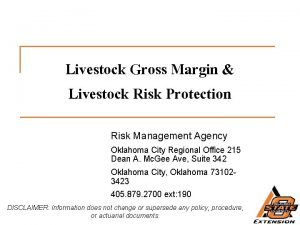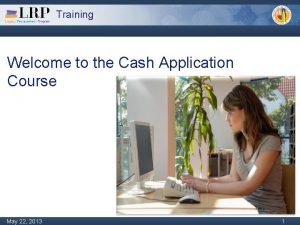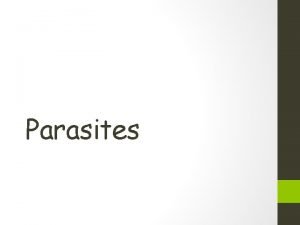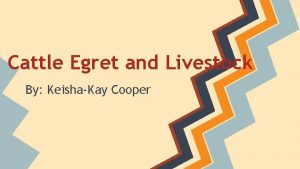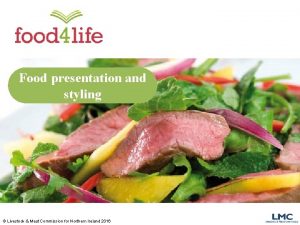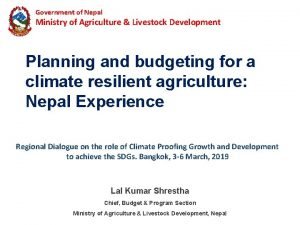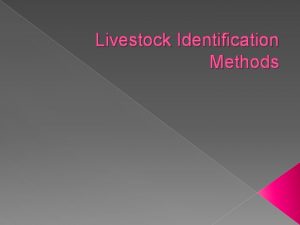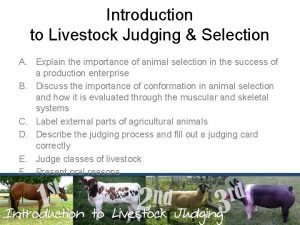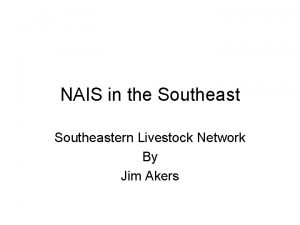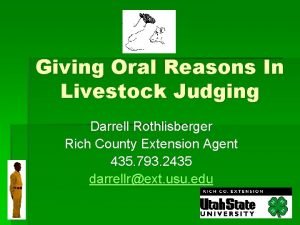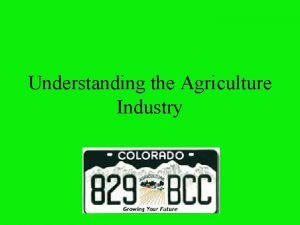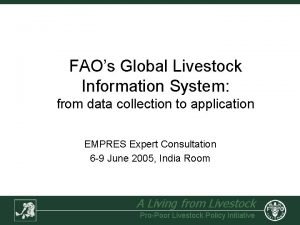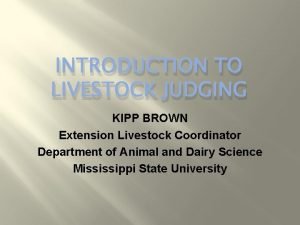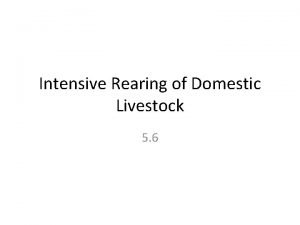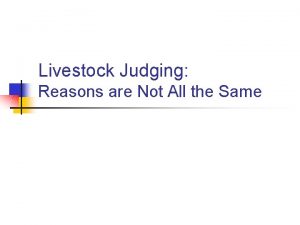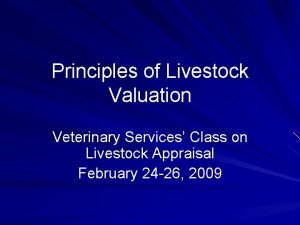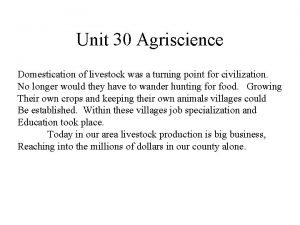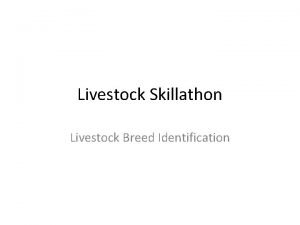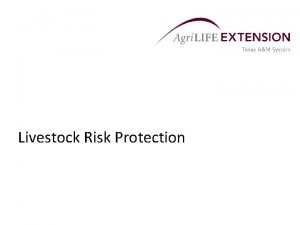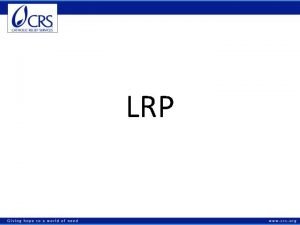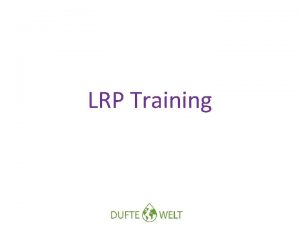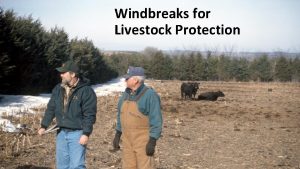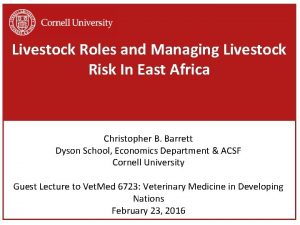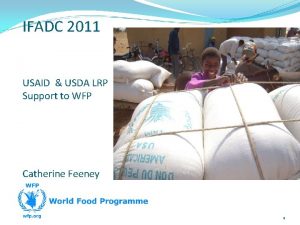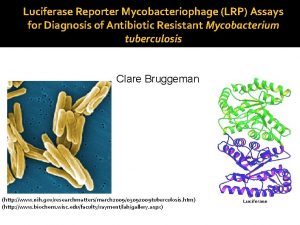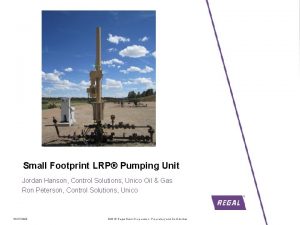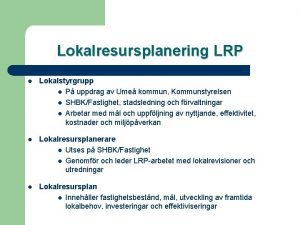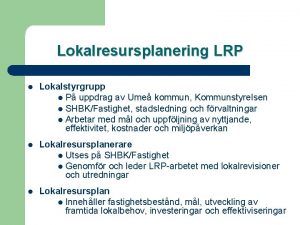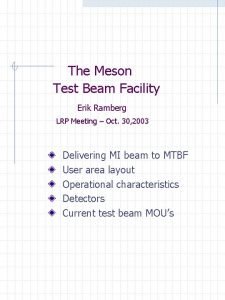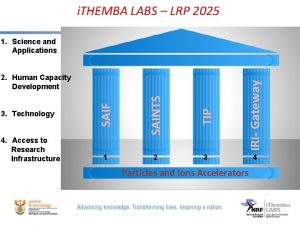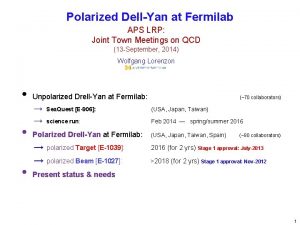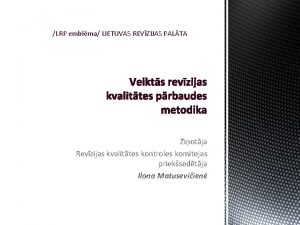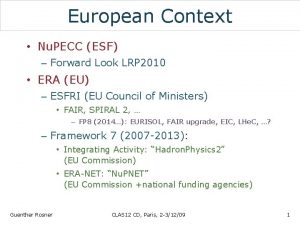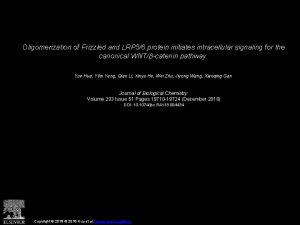Livestock Risk Protection Overview Livestock Risk Protection LRP





















- Slides: 21

Livestock Risk Protection

Overview Ø Livestock Risk Protection (LRP) insurance is a single-peril insurance program offered by the Risk Management Agency (RMA) if USDA through commercial crop or livestock insurance vendors. Ø An LRP policy protects producers from adverse price changes in the underlying livestock market. Ø LRP is currently available in all counties of 37 states.

How LRP Works Ø A producer must submit an LRP policy application through an authorized crop or livestock insurance vendor. Ø Insurance vendors must have completed an RMA training program to become authorized. Ø The application process establishes a producer’s eligibility by documenting his or her substantial beneficial interest in the cattle. A producer with a partial interest in a group or pen of cattle may independently insure his or her portion. Ø After completing the policy application, producers select a coverage price and endorsement length that meets their risk management objectives. Ø The coverage price is a percentage of the expected ending value. This value and the associated rates are based on the current day’s closing futures prices, volume and volatility; they correspond to separate endorsement lengths.

How LRP Works cont. Ø Endorsement lengths are in increments of about 30 days from 13 to 52 weeks. Both feeder cattle and fed cattle producers will want to purchase price risk insurance with an ending date of coverage that meets their risk management objectives. Ø Feeder cattle producers may want the end date of coverage to match the expected date the cattle will be sold or moved to a feedlot. Ø Fed cattle producers, on the other hand, will want to match the ending date of coverage with the anticipated date the cattle will be ready for slaughter.

How LRP Works cont. Ø LRP coverage does not begin until a Specific Coverage Endorsement (SCE) is submitted and accepted by RMA. The submission of the SCE to the RMA is done online after the application has been accepted. The SCE specifies the elected coverage price, the specific number of head covered, and the length of coverage. Ø LRP policies require that sales be allowed from the time rates are set and validated to 9: 00 a. m. Central time the following day. Once the SCE is accepted, the coverage is in place and a premium is due. If, at the ending date of coverage, the Actual End Value has dropped below the selected coverage price, the producer can claim an indemnity but must file for it within 60 days. The indemnity will be paid whether or not the cattle were sold by the ending date of coverage. However, selling the cattle more than 30 days before the end of coverage will terminate the policy unless the insurance provider has specifically approved the sale. Cattle seized, quarantined, destroyed or not salable because of death or disease will still be covered by the policy if written notice of the circumstances is provided within 72 hours.

How LRP Works cont. Ø It is crucial for producers to understand that the ending value of the LRP contract is not the cash price received or a closing futures price as of the end date of the policy. Ø The LRP-Feeder Cattle policy uses the Chicago Mercantile Exchange feeder cattle price index as the actual end value. This cash-settled commodity index is a mathematical calculation that averages the headcounts, weights and prices from numerous livestock sales across the nation to determine its settlement price. Ø The LRP-Fed Cattle policy uses a weekly weighted average of the slaughter cattle prices in five areas as reported by the Agricultural Marketing Service.

Contract Specifics Ø Feeder cattle policies insure all feeder cattle weighing up to 900 pounds. They will cover heifers and Brahma and dairy breeds. A fixed percentage price adjustment factor (PAF) is used to adjust the expected ending values and coverage price from standard weight, beef breed feeder cattle for various combinations of lightweight heifers or non-beef breeds. Ø LRP-Fed Cattle policies provide coverage for fed cattle that will weigh 1, 000 to 1, 400 pounds at slaughter.

Table 1. Key LRP Web sites LRP agent locator LRP premium locator http: //www 3. rma. usda. gov/apps/agents/ http: //www 3. rma. usda. gov/apps/premcalc/ Endorsement lengths, coverage prices, rates and end dates http: //www 3. rma. usda. gov/apps/livestock_reports/m ain. aspx CME Feeder Cattle Index http: //www. cme. com/trading/dta/hist/cash_settled_ commodity_prices. html AMS five-area, weekly weighted average for direct slaughter cattle http: //www. ams. usda. gov/mnreports/lm_ct 150. txt

Table 2. Price Adjustment Factor for LRP-Feeder Cattle Contracts Weight range Steers Heifers Brahman Dairy <6. 0 cwt. 110% 100% 6. 0 – 9. 0 cwt. 100% 90% 80%

Table 3. Contract Specifics for LRP-Fed Cattle and LRP -Feeder Cattle policies Insurable Cattle LRP-Fed Cattle LRP-Feeder Cattle Yield Grade 1 to 3, 10 to 14 cwt. Heifers and steers, Up to 9 cwt. End value based on 5 -area weekly weighted (revised daily) average for slaughter cattle as reported by AMS Authorized endorsement length CMW feeder cattle index 13 to 52 weeks Coverage Levels 70 to 100% Premium subsidy 13% Maximum head insured per SCE 2, 000 1, 000 Maximum insured per crop year 4, 000 2, 000

Example 1. LRP-Feeder Cattle for a West Texas Cow-calf Producer In mid-October, the owner of a 340 -head cow-calf operation is buying an LRP-Feeder Cattle policy for his current calf crop. The calves are typically weaned (88 percent calf crop) about September 15 each year and carried over to the middle of January before the producer decides whether to market them, retain ownership for additional winter grazing, or move them to a feedlot. It is estimated that by mid-January the steer calves will average 700 pounds and the heifers will average 650 pounds. Coverage will be purchased on all of the heifers, including those that will be retained as replacements. This producer has no partners and owns 100 percent of the calves. This producer will use actuarial data from the RMA on October 15, 2007, which is shown in Table 4.

Table 4. LRP Expected End Values, Coverage Prices, Levels, Rates, and Contract End Dates for October 15, 2007 Livestock type Expected end value Coverage price Coverage level Rate Cost per Cwt. End Date Steers $113. 819 $107. 97 . 9486 . 014411 $1. 556 01/14/2008 Heifers $102. 437 $97. 17 . 9486 . 014411 $1. 40 01/14/2008

Table 5. The Insured Value Calculation (The Insured Value = Number of Head multiplied by the Target Weight (live weight, in cwt) multiplied by the Coverage Price multiplied by Ownership Share. Number of head (whole number) X Target weight at end date (cwt per head) X Coverage price (as shown on Table 4) X Insured Share (x. xxxx) = Insured Value ($) 150 steers X 7. 00 cwt X $107. 97 X 1. 00 = $113, 369 150 heifers X 6. 50 cwt X $97. 17 X 1. 00 = $94, 741 = $208, 110 Total insured value

Table 6. The Total Premium Calculation (The Total Premium = Insured Value multiplied by the Rate) Insured value ($) x Rate (as shown in Table 4) = Total premium ($) Steers $113, 369 x . 014411 = $1, 634 Heifers $94, 741 x . 014411 = $1, 365 = $2, 999 Total premium

Table 7. The Subsidy Calculation (The Subsidy = Total Premium multiplied by the Subsidy Rate) Total premium ($) X Subsidy (percent) = Subsidy ($) $2, 999 X . 130 = $390

Table 8. The Producer Premium Calculation (The Producer Premium = Total Premium minus the Subsidy) Total Premium ($) x Subsidy ($) = Producer Premium ($) $2, 999 x $390 = $2, 609

Indemnity Calculation Assume that on the end date of coverage, the CME feeder cattle index has dropped to $103. 50 per cwt. Since the actual ending value is less than the coverage price ($107. 97 $103. 50 = $4. 47), an indemnity is due the producer on the insured steers. The PAF for heifers is applied to the actual ending value ($103. 50 x 90% = $93. 15). Again, an indemnity is due on the heifer calves ($97. 17 - $93. 15 = $4. 02). The indemnity is equal to the number of head multiplied by the target weight (in cwt as defined in the specific coverage endorsements), multiplied by the difference between the coverage price and the actual ending value (in dollars per cwt), and then multiplied by ownership share (percentage).

Table 9. Indemnity Calculation Number of head (whole number) x Target weight at end date (cwt per head) x Coverage price minus Actual ending value x Insured Share (x. xxxx) = 150 steers x 7. 00 cwt x $4. 47 x 1. 00 = $4, 693 150 heifers x 6. 50 cwt x $4. 02 x 1. 00 = $3, 919 = $8, 612 Total indemnity Indemnity ($)

Attractive Attributes of LRP Policies Ø The fact that policies will be sold at the rates ($ cost per cwt) quoted on the RMA website will appeal to producers who have tried to purchase a CME put option but failed because of light trading on that particular day or simply not being able to get an order placed and filled at the desired price. Ø LRP policies can be tailored to fit producers of different sizes. Ø The subsidized premium of an LRP policy may also appeal to producers.

Disadvantages of LRP Policies Ø LRP is basically an insurance policy. Once this policy has been purchased and is in place, it cannot be offset or exercised until the end date of coverage. Ø Local basis risk is still an issue facing producers who use LRP policies. Increased investor interest in the commodity markets may be widening local basis and making it less predictable. The difference in basis is not likely to increase the utility of LRP to Texas producers. Ø Feeder cattle producers who want to buy coverage at the same time cattle are purchased and producers who want to buy LRP coverage at the most distant end dates of coverage may find their choices of coverage prices limited. Ø RMA also retains the right to suspend the sale of LRP policies if the market becomes unstable.

Summary Ø LRP is an insurance tool that may help with risk management role once a producer identifies his risk management objectives (risk tolerance, cost parameters, etc. ) and understands the limitations of LRP. Ø Producers will need to learn to evaluate LRP in comparison with other risk management strategies that use CME futures and option contracts at different periods in the production cycle. Ø LRP policies are intended to insure against a drop in the underlying livestock market. Ø LRP policies also do not guarantee a cash price or basis level for the local market.
 Lrp-73102
Lrp-73102 Lrp lausd
Lrp lausd Livestock risk management brokers near me
Livestock risk management brokers near me Exchange online protection overview
Exchange online protection overview Liquidity measures
Liquidity measures Parasites of livestock - vocabulary
Parasites of livestock - vocabulary Cattle egret and cattle symbiotic relationship
Cattle egret and cattle symbiotic relationship Food presentation is important
Food presentation is important Ministry of agriculture and livestock development nepal
Ministry of agriculture and livestock development nepal Livestock identification methods
Livestock identification methods Livestock judging 101
Livestock judging 101 Livestock judging card
Livestock judging card Livestock network
Livestock network Livestock judging oral reasons
Livestock judging oral reasons Colorado agriculture facts
Colorado agriculture facts Livestock information system
Livestock information system Goat judging terminology
Goat judging terminology Intensive rearing of livestock
Intensive rearing of livestock Livestock judging reasons
Livestock judging reasons Livestock valuation methods
Livestock valuation methods Unit 30 dairy and livestock management
Unit 30 dairy and livestock management Livestock breed identification swine
Livestock breed identification swine
